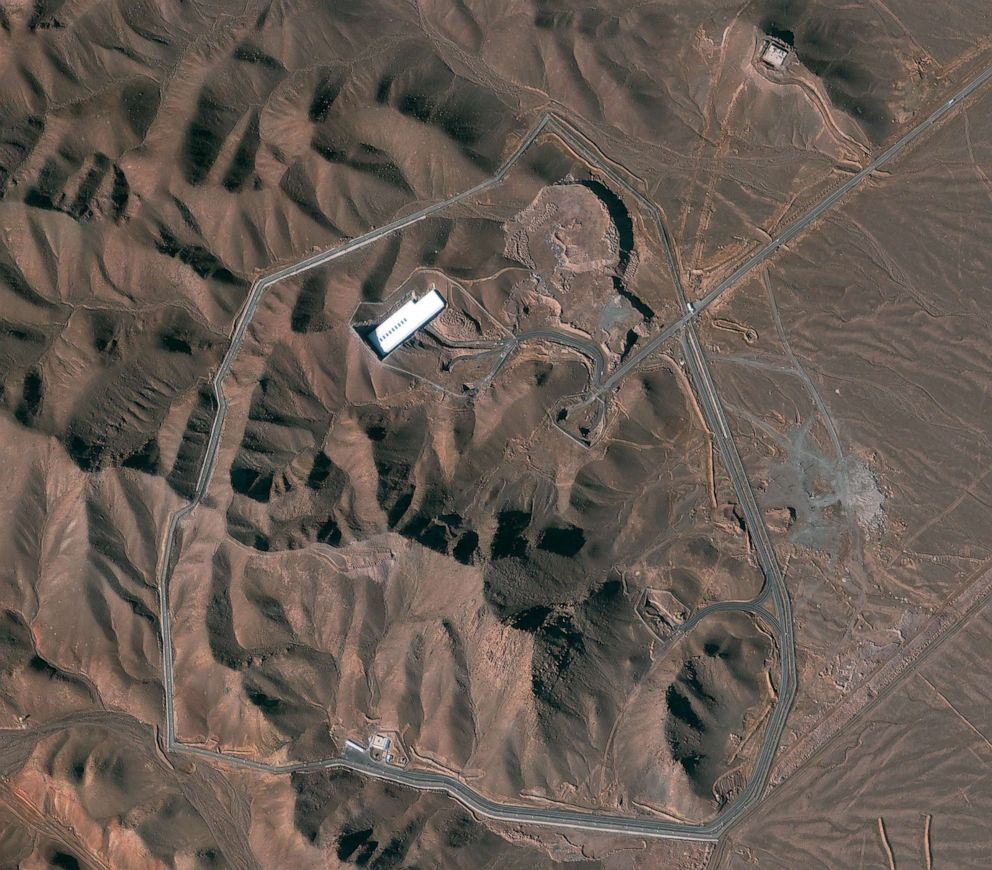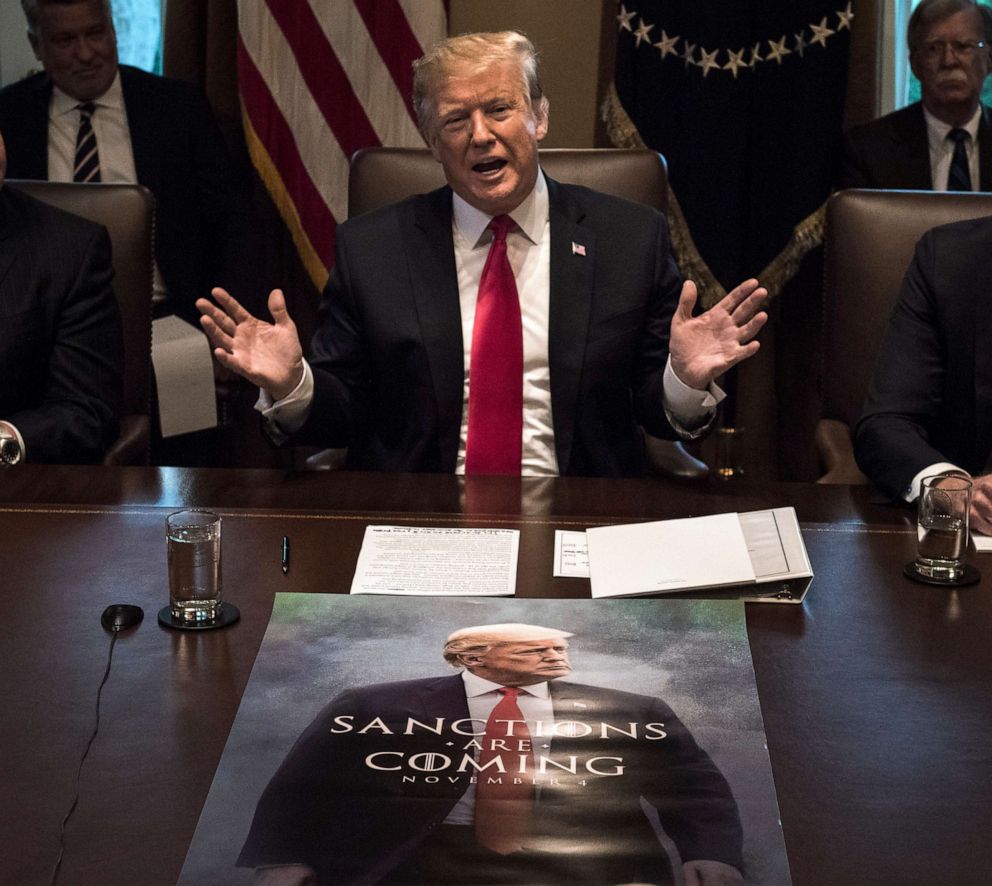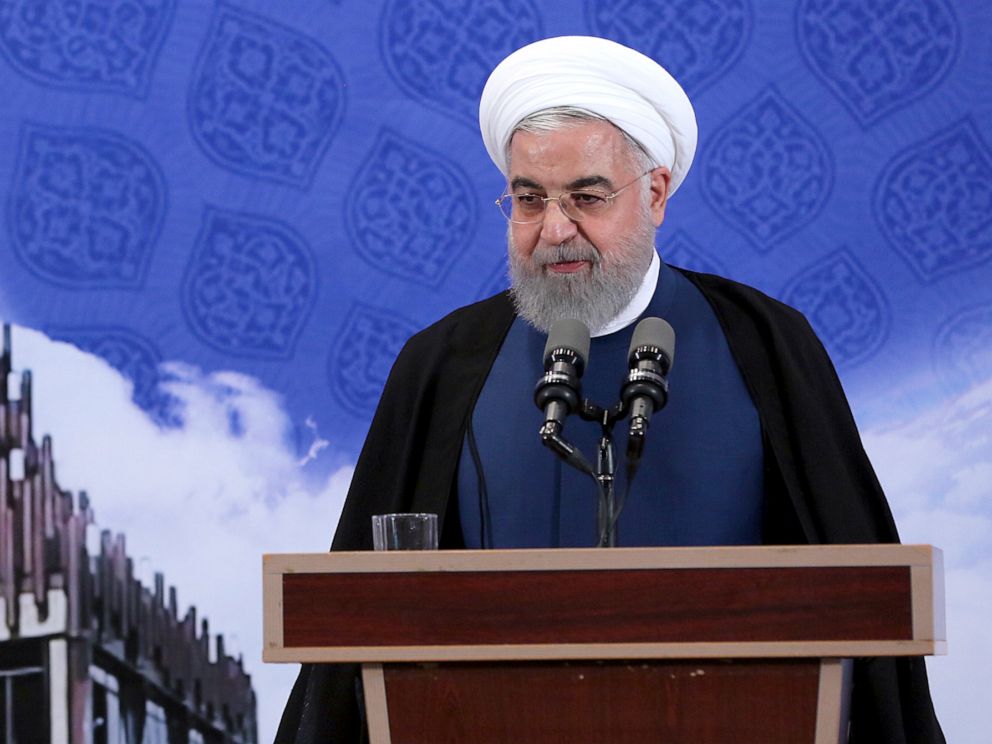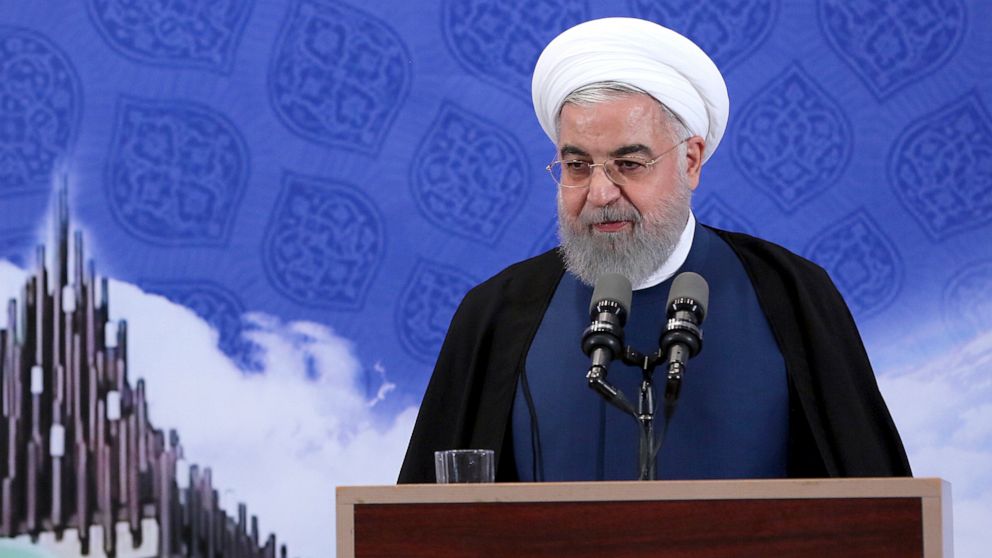[ad_1]
Iran‘s president announced Tuesday that his government will begin injecting uranium gas into centrifuges at its underground nuclear facility at Fordo — the latest step away from the nuclear deal that Tehran signed with the U.S. and other world powers after President Donald Trump withdrew from the agreement.
Interested in Iran?
Add Iran as an interest to stay up to date on the latest Iran news, video, and analysis from ABC News.
It’s also the most provocative move yet by Iran because of Fordo’s symbolic importance in the tense nuclear negotiations that led to the nuclear deal, which is increasingly unraveling in a slow march towards a nuclear crisis the world seems to be paying little attention to.
The announcement follows one on Monday by the head of Iran’s nuclear program that the country would double its number of advanced centrifuges and develop a new one that it says can work 50 times faster. Tehran has taken these steps in a bid to pressure Europe to provide more economic relief from U.S. sanctions as the United Kingdom, France, and Germany — the three European signatories to the deal — continue to defend it and work to uphold it.
 DigitalGlobe via Getty Images, FILE
DigitalGlobe via Getty Images, FILE
In an address on state television, Iranian President Hassan Rouhani said Iran will begin injecting gas into the 1,044 centrifuges at Fordo on Wednesday under the supervision of the International Atomic Energy Agency, or IAEA, but was unclear on whether that would be used to enrich uranium.
Iran’s mission to the IAEA said in a letter afterwards that they would use UF6, or uranium hexafluoride, allowing the facility to produce enriched uranium, which can fuel nuclear reactors or nuclear weapons.
Under the deal, formally known as the Joint Comprehensive Plan of Action, or JCPOA, Iran is barred from enrichment at Fordo — crossing another clear red line, although it’s still unclear if Iran intends to stockpile that enriched uranium. Iran’s nuclear facility at Natanz is allowed to use 5,000 centrifuges, and Iran has already broken the JCPOA’s cap on how much enrichment it can stockpile and its enrichment level.
But while details of Iran’s plan for Fordo still emerge, the announcement is already deeply provocative because the secret underground facility was at the heart of the nuclear negotiations. Its existence was only disclosed by Iran in 2009 after years of U.S. surveillance and pressure from Western countries, concerned that its secret location deep in a mountainside meant it was being used to produce a nuclear weapon.
 The Washington Post via Getty Images, FILE
The Washington Post via Getty Images, FILE
The announcement is “a very big, troubling step” that “will definitely raise temperatures in the region,” according to Richard Nephew, who was the lead sanctions expert for the Obama administration team negotiating with Iran.
Even Rouhani seemed to understand how provocative this is, saying Tuesday, “We know their sensitivity with regard to Fordo. With regard to these centrifuges, we know,” and emphasizing the move was reversible, per Reuters.
Under the nuclear deal, the facility was supposed to be refitted for research purposes and barred from enrichment. In return, the U.S. would sign waivers allowing other countries to continue to provide technical and material support to Iran’s civil nuclear program, including at Fordo.
 Office of the Iranian Presidency via AP
Office of the Iranian Presidency via AP
The Trump administration reissued those waivers again last Thursday, with State Department spokesperson Morgan Ortagus saying it would “preserve oversight of Iran’s civil nuclear program.” But Republican hardliners in Congress blasted it as upholding the nuclear deal, with Sen. Lindsey Graham, R-N.C., and Ted Cruz, R-Texas, issuing a rare rebuke of the president and saying, “Iran is now openly violating the nuclear deal and stockpiling dangerous nuclear material. There is no justification for letting them continue to build up their program.”
With the Fordo announcement, pressure on Trump to penalize Iran and further destroy the deal will only increase, as well as on the United Kingdom, France, and Germany to abandon the agreement and join the U.S.
European Union spokeswoman Maja Kocijancic described the bloc as “concerned” by the decision, according to the Associated Press. On Monday, Kocijancic urged Iran “to reverse such steps without delay and to refrain from any further measures that would undermine the nuclear deal” and warned continued E.U. commitment to the deal “depends on the full compliance by Iran.”
But on Tuesday, Rouhani warned that unless the E.U. can help Iran sell oil abroad and increase its economic activity, Iran will announce a new move in January. Until then, there seems to be little Western unity on how to stop Tehran and no diplomacy between Washington and Tehran.
[ad_2]
Source link

